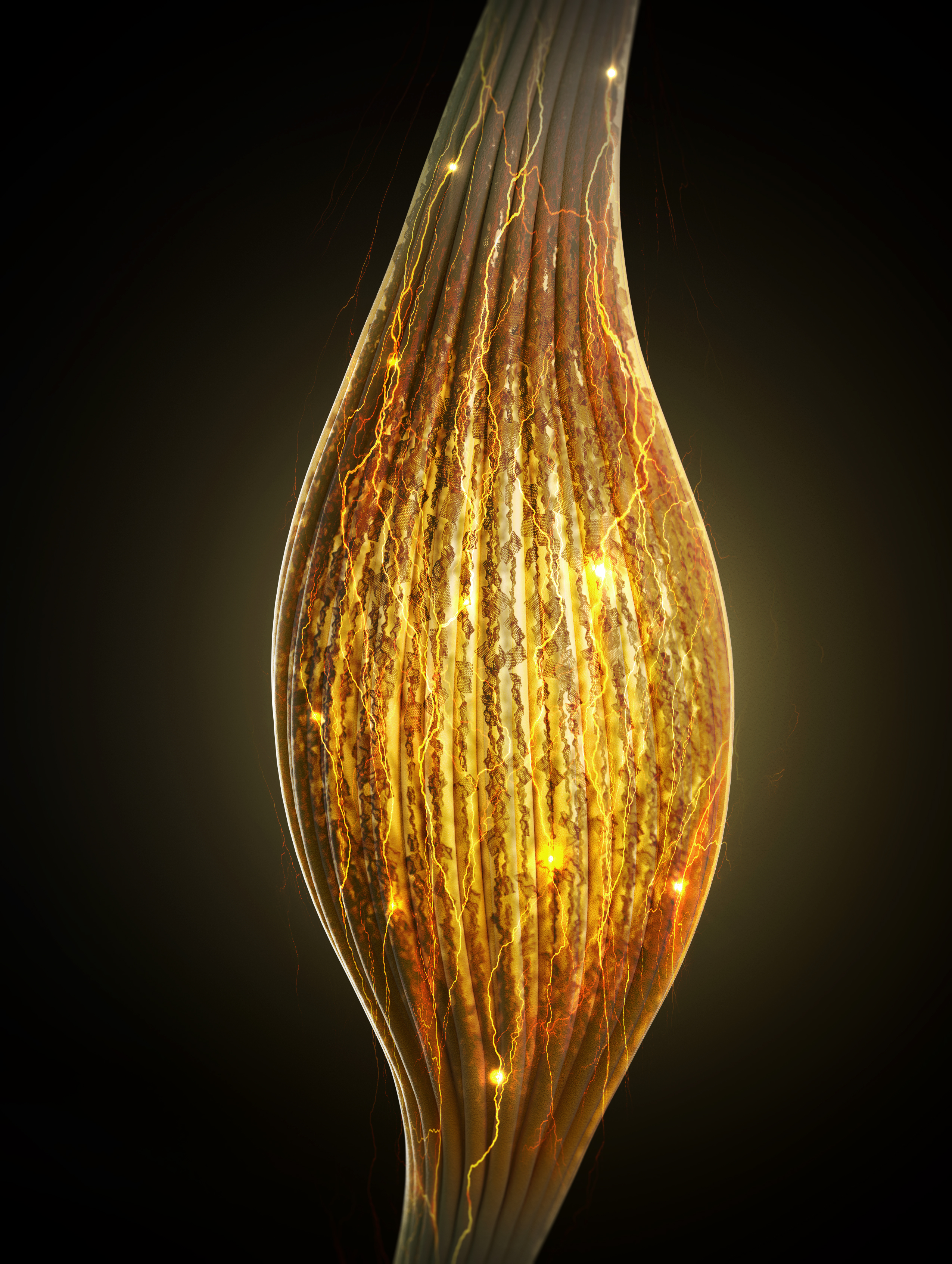KAIST
BREAKTHROUGHS
Research Webzine of the KAIST College of Engineering since 2014
Fall 2025 Vol. 25Revolutionizing strength: Hercules artificial muscles 17 times stronger than human muscles
Prof. Sang Ouk Kim’s research team developed a Hercules artificial muscle, recognized by IUPAC as a 2023 Top 10 Emerging Technology for its performance, 17 times stronger than human muscle, with applications in wearable devices and soft robotics.

KAIST (Korea Advanced Institute of Science and Technology), under the leadership of Professor Sang Ouk Kim from the Department of Materials Science and Engineering, announced that their Hercules artificial muscle technology, developed in 2022, has been selected as one of the "2023 Top Ten Emerging Technologies" by the International Union of Pure and Applied Chemistry (IUPAC). This recognition underscores the global importance of technology in addressing contemporary scientific and technological challenges.
IUPAC, the world’s largest organization for chemical and materials research, established in 1919, has selected ten promising technologies annually since 2019. These technologies are chosen for their potential to address multifaceted crises facing humanity. The selection of the Hercules artificial muscle highlights its significance in promoting sustainability and technological advancements.
In addition to international recognition, the Hercules artificial muscle was also named one of the "2023 Top Ten Nanotechnologies" by the Ministry of Science and ICT and by the National Nano Technology Research Council in South Korea. This breakthrough technology uses a graphene-liquid crystalline composite material that exhibits muscle-like movements and boasts strength 17 times that of human muscles. This achievement marks the first successful creation of such a powerful artificial muscle globally.
The innovative properties of the Hercules artificial muscle make it suitable for various applications, including wearable assistive devices for the elderly and disabled, and soft robotics applications in extreme environments such as space, deep seas, and disaster areas. The artificial muscle mimics the behavior of human muscles closely, enabling reversible muscle movement with superior mechanical properties and performance.
The research findings have been published as a cover article in the prestigious scientific journal Nature Nanotechnology (IF: 40.5), further validating the significance of the technology. The paper titled "Human-muscle-inspired single-fibre actuator with reversible percolation" details the development and potential applications of this groundbreaking technology.
Professor Sang Ouk Kim expressed his pride in the international and national recognition of their artificial muscle technology, emphasizing its importance and potential impact on future scientific and technological fields, particularly in the context of the Fourth Industrial Revolution. The recognition by IUPAC and the Ministry of Science and ICT demonstrates the technological prowess and innovative capacity of KAIST in the global scientific community.
The Hercules artificial muscle joins other innovative technologies recognized by IUPAC in 2023, including technologies for the biological recycling of PET plastics, a seawater CO2 removal method, polymer degradation reactions, GPT models for chemistry, photocatalytic hydrogen, wearable sensors, low-sugar vaccines, bacterial treatments, and synthetic electrochemistry.
This recognition marks a significant milestone for KAIST and highlights the potential of the Hercules artificial muscle to contribute to various fields, enhancing human capabilities and addressing critical challenges through advanced materials science and engineering.
Most Popular

A New solution enabling soft growing robots to perform a variety of tasks in confined spaces
Read more
Development of a compact high-resolution spectrometer using a double-layer disordered metasurface
Read more
Towards a more reliable evaluation system than humans - BiGGen-Bench
Read more
AI-Designed carbon nanolattice: Feather-light, steel-strong
Read more
Dual‑Mode neuransistor for on‑chip liquid‑state computing
Read more